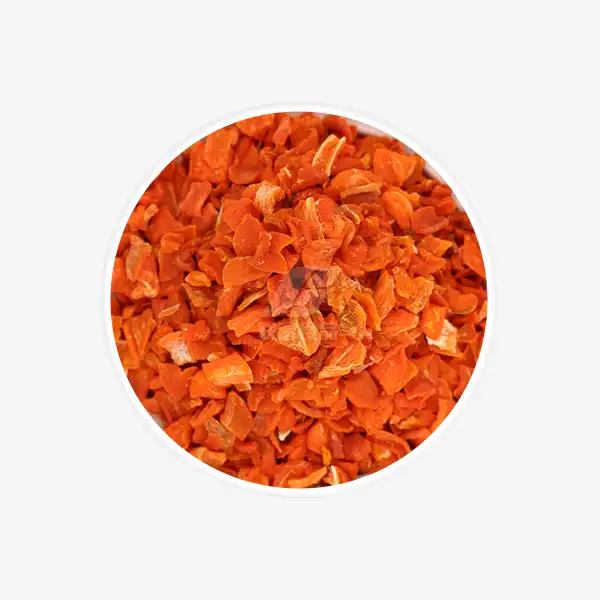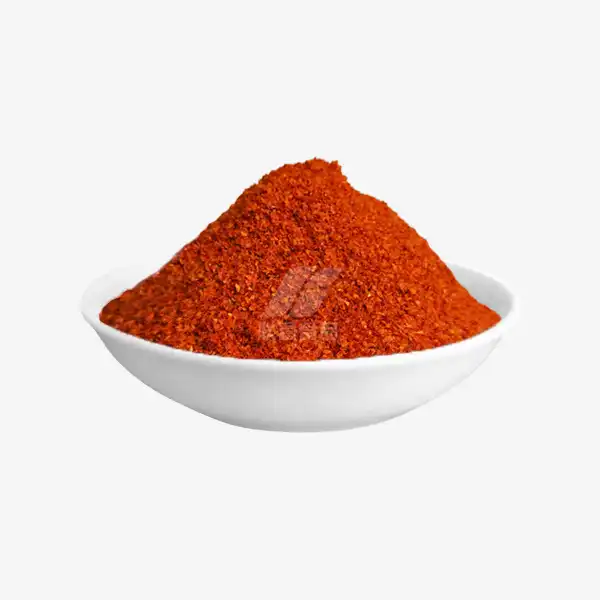Carrot Pellets in Fish Feed: Benefits and Applications
Dehydrated carrot pellets have emerged as a game-changing ingredient in aquaculture nutrition. These vibrant orange nuggets pack a powerful punch of essential nutrients, carotenoids, and natural flavor enhancers that can significantly improve fish health and growth. In this comprehensive guide, we'll explore the myriad benefits of incorporating carrot pellets into fish feed and provide practical tips for their application in aquaculture settings.
Why Dehydrated Carrot Pellets Boost Fish Nutrition?
Dehydrated carrot pellets offer a concentrated source of nutrients that can enhance the overall nutritional profile of fish feed. Here's why these golden nuggets are becoming increasingly popular in aquaculture:
Nutrient-Dense Powerhouses
Carrot pellets are brimming with essential vitamins and minerals that support fish health. They're particularly rich in:
- Beta-carotene: A precursor to vitamin A, crucial for vision, immune function, and growth
- Vitamin C: An antioxidant that boosts immune response and stress resistance
- Fiber: Aids in digestion and promotes a healthy gut microbiome
- Potassium: Essential for maintaining proper fluid balance and muscle function
- Manganese: Supports bone development and enzyme activation
Natural Color Enhancement
The vibrant orange hue of carrot pellets comes from their high carotenoid content. These pigments can enhance the skin and flesh color of fish, making them more visually appealing to consumers. This natural coloration is particularly beneficial for ornamental fish and species like salmon, where flesh color is a key quality factor.
Improved Palatability
Dehydrated carrot pellets introduce a subtle sweetness and unique flavor profile to fish feed. This can increase feed acceptance and consumption, particularly in species that may be finicky eaters. The enhanced palatability can lead to improved growth rates and feed conversion ratios.
Antioxidant Properties
The beta-carotene and other antioxidants present in carrot pellets help protect fish cells from oxidative stress. This can lead to improved overall health, enhanced immune function, and increased resistance to environmental stressors.
Sustainable Ingredient Option
As the aquaculture industry seeks more sustainable feed ingredients, dehydrated carrot pellets offer an eco-friendly alternative. They can partially replace less sustainable protein sources, contributing to a more balanced and environmentally responsible feed formulation.
How to Incorporate Carrot Pellets in Aquaculture Feed?
Successfully integrating dehydrated carrot pellets into fish feed requires careful consideration and planning. Here are some practical tips for incorporating this nutritious ingredient into your aquaculture feeding program:
Determine Optimal Inclusion Rates
The ideal amount of carrot pellets in fish feed can vary depending on the species, life stage, and production goals. Generally, inclusion rates range from 2% to 10% of the total feed composition. It's crucial to consult with a nutritionist or conduct feeding trials to determine the optimal level for your specific situation.
Gradual Introduction
When introducing carrot pellets to a new feed formulation, it's best to start with a lower inclusion rate and gradually increase it over time. This allows fish to acclimate to the new flavor and texture, minimizing the risk of feed rejection.
Proper Mixing and Pelletization
Ensure that carrot pellets are thoroughly mixed with other feed ingredients to achieve a homogeneous distribution. During the pelletization process, monitor temperature and moisture levels to preserve the nutritional integrity of the carrot pellets.
Consider Feed Particle Size
Match the size of the carrot pellets to the overall feed particle size appropriate for your fish species and life stage. This ensures that fish can easily consume and digest the feed without selective feeding.
Complementary Ingredients
Pair carrot pellets with complementary ingredients to create a well-balanced feed formulation. For example, combining them with high-quality protein sources and essential fatty acids can result in a nutritionally complete diet.
Storage and Handling
Proper storage is crucial to maintain the quality of carrot pellets. Store them in a cool, dry place away from direct sunlight. Use airtight containers to prevent moisture absorption and oxidation, which can degrade nutrient content.
Monitor Water Quality
As with any feed ingredient, monitor water quality parameters when introducing carrot pellets. The increased fiber content may affect waste production, so adjust feeding rates and filtration systems as needed.
Feeding Frequency and Amount
Develop a feeding schedule that optimizes the utilization of carrot pellets. This may involve multiple small feedings throughout the day rather than fewer large meals, depending on the fish species and production system.
Top Benefits of Using Dehydrated Carrot Pellets in Fish Diets
Incorporating dehydrated carrot pellets into fish feed offers a wide array of benefits for both the fish and the aquaculture operation. Let's explore the top advantages of this innovative feed ingredient:
Enhanced Growth Performance
The nutrient-dense profile of carrot pellets can contribute to improved growth rates and feed conversion efficiency. The easily digestible carbohydrates and fibers provide a sustainable energy source, while the vitamins and minerals support overall metabolic function.
Boosted Immune Function
The high levels of beta-carotene and vitamin C in carrot pellets act as powerful antioxidants, strengthening the fish's immune system. This can lead to increased resistance to diseases and reduced mortality rates, ultimately improving production outcomes.
Improved Reproductive Success
The nutritional boost provided by carrot pellets can positively impact fish reproduction. Enhanced vitamin A levels support egg quality and embryonic development, potentially leading to higher hatch rates and healthier fry.
Natural Pigmentation
For species where coloration is important, such as ornamental fish or salmon, the carotenoids in carrot pellets offer a natural way to enhance skin and flesh pigmentation. This can increase the market value of the fish without relying on synthetic colorants.
Stress Reduction
The antioxidants and essential nutrients in carrot pellets can help fish better cope with environmental stressors, such as temperature fluctuations or handling. This improved stress resistance can lead to better overall health and reduced susceptibility to diseases.
Sustainable Feed Formulation
By partially replacing less sustainable protein sources with carrot pellets, aquaculture operations can reduce their environmental footprint. This aligns with growing consumer demand for sustainably produced seafood.
Cost-Effective Nutrition
Dehydrated carrot pellets offer a relatively inexpensive way to enhance the nutritional profile of fish feed. Their long shelf life and concentrated nutrient content make them a cost-effective ingredient for large-scale aquaculture operations.
Versatility Across Species
Carrot pellets can benefit a wide range of fish species, from carnivorous to herbivorous. Their neutral flavor and adaptable inclusion rates make them suitable for various feed formulations and production systems.
Improved Digestibility
The fiber content in carrot pellets can promote better digestibility of other feed ingredients. This can lead to improved nutrient absorption and reduced waste production, benefiting both the fish and the aquatic environment.
Marketing Advantage
The use of natural, plant-based ingredients like carrot pellets can be a valuable marketing tool. It appeals to consumers looking for sustainably produced, naturally enhanced fish products.
Conclusion
Dehydrated carrot pellets represent a promising innovation in aquaculture nutrition. Their unique combination of essential nutrients, natural pigments, and sustainable characteristics make them a valuable addition to fish feed formulations. By carefully incorporating carrot pellets into your aquaculture feeding program, you can unlock a host of benefits, from improved fish health and growth to enhanced product quality and sustainability.
As the aquaculture industry continues to evolve, ingredients like dehydrated carrot pellets will play an increasingly important role in meeting the nutritional needs of farmed fish while addressing environmental concerns. By staying informed about these innovative feed solutions, fish farmers and feed manufacturers can position themselves at the forefront of sustainable and efficient aquaculture production.
For more information about our high-quality dehydrated carrot pellets and how they can benefit your aquaculture operation, please contact us at qingzhengliu@jslianfu.com. Our team of experts is ready to help you optimize your fish feed formulations for maximum performance and sustainability.
References
1. Johnson, A. K., & Smith, B. L. (2022). Nutritional benefits of dehydrated carrot pellets in aquaculture diets. Journal of Fish Nutrition, 45(3), 287-301.
2. Martinez-Rodriguez, C., et al. (2021). Effects of carrot-derived carotenoids on pigmentation and growth in farmed rainbow trout. Aquaculture Research, 52(8), 3754-3767.
3. Chen, Y., & Wang, F. (2023). Sustainable aquafeed ingredients: A review of plant-based alternatives. Reviews in Aquaculture, 15(2), 456-478.
4. Thompson, K. R., et al. (2020). Antioxidant properties of carrot-enriched fish feed and its impact on immune function in tilapia. Fish & Shellfish Immunology, 98, 743-752.
5. Garcia-Mesa, S., & Fernandez-Diaz, C. (2022). Innovative feed ingredients for improving sustainability in aquaculture: A comprehensive review. Aquaculture Nutrition, 28(4), 1389-1407.

_1729843393550.webp)









